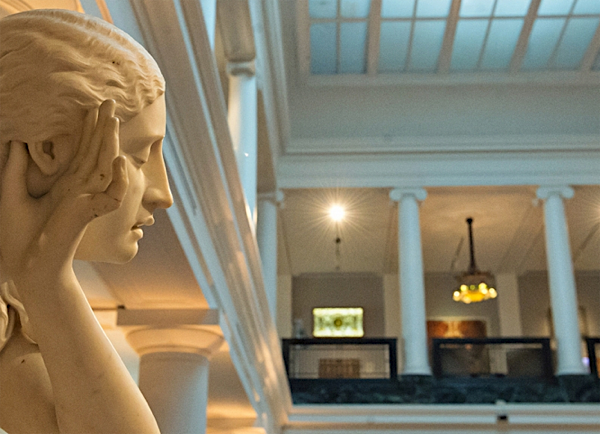
| ||||
| Level 100 | ||||
| ||||
| Level 200 | ||||
|
| ||||
| Level 300 | ||||
|
| ||||
| Level 400 | ||||
|
| ||||
| Level 500 | ||||
|
| ||||
| Level 600 | ||||
|
| ||||
| History of Art | ||||
| LS&A | ||||
| University of Michigan | ||||
| Back to the list of courses |
First Year Seminar: "Why Art?" In the Galleries and Behind the Scenes at the Museum

Why do we value works of visual art? Why do we display such objects in our homes and in museums? How do works of art "work" when we look at them? What do we get out of reading art criticism and art history? This course provides an introduction to the study of visual art at the college-level and an inside-view of the University of Michigan Museum of Art, one of the top university museums in the country. Each week we will devote one meeting to classroom activities and one meeting to first-hand study of objects in the galleries or "behind the scenes" in the object study room of the UMMA. We will meet curators of the various collections in the museum, to ask questions about the objects that fascinate them as well as to learn about their professions. We will look at some of the outstanding masterpieces on view in the UMMA, from a late-medieval altarpiece to Guercino's Esther before Ahasuerus of 1639, to a work of 1960s Abstract Expressionism by Franz Klein, to Tyree Guyton's Untitled (Paint Cans) finished in 2010. We will also look at some broken and unfinished objects that are never seen by the general public but are highly rewarding for what they can tell us about the techniques and materials artists have used. Students will gain experience in several ways of looking at visual art and practice in speaking and writing about why such things are made and why they look the way they do. Assigned readings will be drawn from Anne D'Alleva's Look! The Fundamentals of Art History (3rd edition) and from a variety of articles and book chapters that will be posted on the course website. Writing assignments will require a copy of Michael Harvey's The Nuts and Bolts of College Writing (2nd edition).
Textbooks: Anne D'Alleva Look! The Fundamentals of Art History (3rd edition)Michael Harvey The Nuts and Bolts of College Writing (2nd edition)
Course requirements: dedicated attendance and participation in discussion; two short papers and a longer research paper; two short slide-essay exams.
Intended audience: first-year undergraduates
Class format: seminar, meets 1 ½ hours twice per week
This course fulfills the HU distribution.